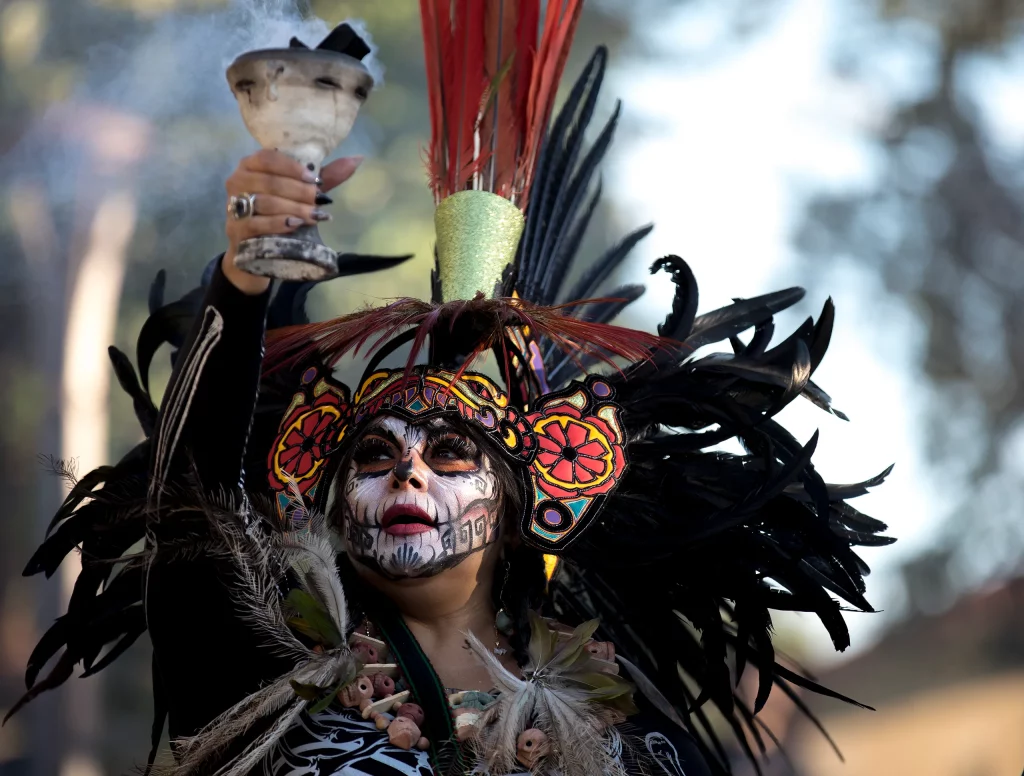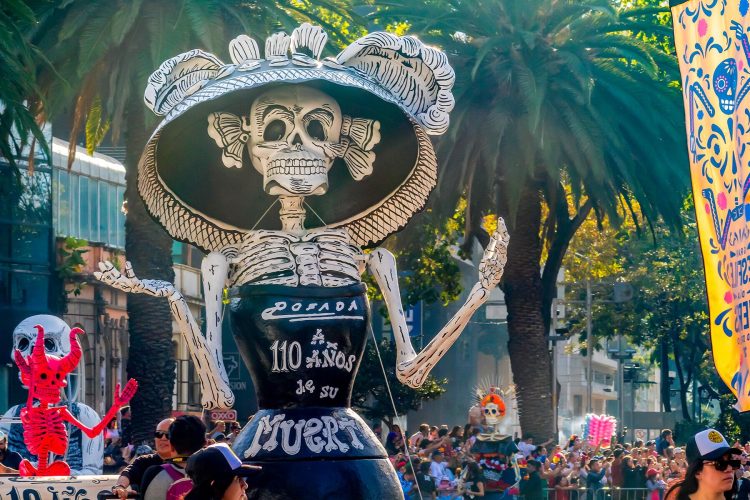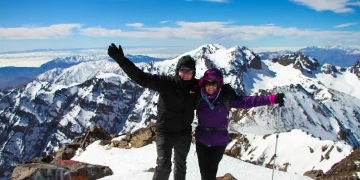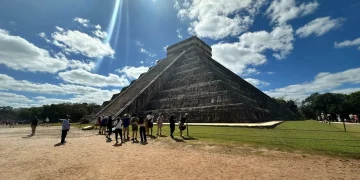The Day of the Dead, or Día de los Muertos, is one of Mexico’s most cherished and visually stunning cultural traditions. Rooted deeply in indigenous beliefs and Catholic influences, this celebration honors deceased loved ones with vibrant altars, colorful skulls, marigold flowers, and lively festivities. Over the years, Día de los Muertos has evolved beyond Mexico’s borders, capturing the imagination of people worldwide. In 2024, the tradition has seen an unprecedented surge in global visibility and participation on TikTok, the world’s fastest-growing social media platform known for viral trends and cultural exchange. But why is this Mexican tradition suddenly exploding in global TikTok feeds, and what does it mean for the future of Día de los Muertos itself? This article dives into the cultural appropriation debates clashing with the growing wave of cultural tourism, the responses from Mexico City and Oaxaca authorities, and the broader reflection on how ancient traditions are adapting in an age of virality.
The Viral Spread of Día de los Muertos on TikTok
TikTok’s format — short, engaging videos with trending sounds and hashtags — has created fertile ground for cultural moments to gain rapid international exposure. In 2024, Día de los Muertos content featuring spectacular makeup transformations, elaborate altar setups, traditional dances, and street celebrations has dominated the platform. Influencers, creators, and even casual users from across the globe share their interpretations and tributes, often blending their own cultural aesthetics with Mexican symbols like calaveras (skulls), sugar skull makeup, and papel picado decorations.
This viral phenomenon is not merely a passing trend. It represents a digital age where cultural practices are more accessible and visible than ever. TikTok’s algorithm amplifies content that resonates emotionally and visually, and Día de los Muertos—with its rich colors, emotive themes of remembrance, and theatrical performances—fits perfectly into the platform’s dynamics. Users are captivated by the blend of life and death, mourning and celebration, personal stories, and artistic expression.
The global fascination is understandable. For many outside Mexico, Día de los Muertos offers a fresh perspective on death, contrasting with the often somber and fearful Western outlook. It invites people to remember their ancestors with joy and creativity, a message that resonates universally. Consequently, videos tagged with #DayOfTheDead and its Spanish counterpart #DíaDeLosMuertos have soared in views and engagement in 2024, with some individual posts reaching tens of millions of views.
Cultural Appropriation Debates
With such widespread sharing and reinterpretation comes inevitable debate over cultural appropriation. Critics argue that much of the TikTok content reduces Día de los Muertos to aesthetic or party themes, stripping away its profound spiritual and historical significance. Makeup tutorials that mimic sugar skull designs without understanding their meaning, or parties that use the imagery as mere costume fodder, risk trivializing a tradition meant to honor ancestors and life cycles.
These concerns are not new but have become more urgent as the tradition gains visibility in non-Mexican contexts. Some Mexican cultural custodians and scholars emphasize the need for respectful engagement that acknowledges the indigenous roots of Día de los Muertos, including the Nahua peoples and other indigenous groups who sustained the tradition through centuries. They warn against commercialization and exoticization, which could distort or overshadow local communities’ voices and experiences.
Moreover, the monetization of Day of the Dead content on TikTok—through sponsorships, merchandise, or viral fame—raises ethical questions. When creators profit from a sacred tradition without giving back to the communities that keep it alive, it can perpetuate cultural exploitation. This is especially sensitive given the historical context of colonization and marginalization faced by indigenous Mexicans.
The Surge in Cultural Tourism
While appropriation concerns grow louder, the global TikTok wave has simultaneously fueled a surge in cultural tourism to Mexico, especially to iconic Day of the Dead hotspots like Mexico City and Oaxaca. Foreign visitors are drawn to the vivid parades, community altar exhibitions, traditional food offerings like pan de muerto, and authentic rituals that are impossible to fully grasp through a screen.

Tourism boards and local businesses have embraced this surge with mixed feelings. On one hand, the increased attention brings economic benefits, helping artisans, performers, and small vendors sustain their livelihoods. On the other hand, the influx of tourists can strain infrastructure, inflate prices, and create an atmosphere that risks commercializing what many see as a sacred family occasion.
In response, Mexico City and Oaxaca—two of the most important cultural hubs for Día de los Muertos—have tightened participation rules in 2024 to preserve the authenticity and dignity of the celebrations. These regulations limit where and how commercial entities can operate during the festivities, enforce codes of conduct for tourists, and promote official cultural education campaigns about the meaning of the tradition.
Officials emphasize collaboration with indigenous communities to ensure that tourism development supports their cultural preservation rather than eroding it. For instance, Oaxaca has introduced programs that encourage visitors to engage respectfully with local rituals, purchase crafts directly from artisans, and attend sanctioned events instead of unsupervised street parties.
Reflection on Tradition and Virality
The global spread of Día de los Muertos on TikTok invites a deeper reflection on how traditions adapt—or sometimes clash—with digital-age virality. On one hand, social media offers an unprecedented platform for cultural exchange, understanding, and pride. It allows diasporic Mexicans to reconnect with their heritage, educates curious outsiders, and encourages creative reinterpretation.
On the other hand, the viral economy rewards simplification, sensationalism, and aesthetic appeal over nuance and depth. Traditions like Día de los Muertos risk becoming fragmented into isolated symbols or trendy visuals divorced from their original context. This poses challenges to cultural transmission and continuity.
Yet tradition itself has never been static. Día de los Muertos evolved over centuries by incorporating pre-Hispanic and colonial elements, shifting regional practices, and adapting to social changes. The current moment may be another phase of evolution, where communities and cultural authorities negotiate what can be shared widely, what must be protected, and how the tradition’s core values survive in a rapidly changing world.
This dynamic also spotlights questions about cultural ownership in a globalized digital society. When a tradition is embraced worldwide, how do you balance openness with respect? Who has the authority to define authenticity? How can digital platforms be harnessed to educate and celebrate rather than appropriate?
Many Mexican creators and scholars advocate for digital literacy campaigns, partnerships between social media platforms and cultural institutions, and community-led storytelling that gives voice to indigenous perspectives. These efforts aim to create a more ethical and enriching cultural exchange that honors Día de los Muertos not just as a spectacle but as a living tradition rooted in memory, identity, and respect.
Looking Ahead
As Día de los Muertos continues to captivate TikTok users worldwide, 2024 could be a watershed year for the tradition’s global visibility and cultural negotiation. The tension between viral trends and cultural preservation is palpable but not insurmountable. Mexico’s proactive stance in regulating participation and educating visitors reflects a commitment to safeguarding the spirit of the celebration.
For international audiences, the surge on TikTok is an invitation to approach Día de los Muertos with curiosity, humility, and a willingness to learn beyond surface-level aesthetics. Engaging with the tradition means recognizing its indigenous origins, its communal and spiritual significance, and the living communities who keep it vibrant.
Ultimately, the Day of the Dead going global on TikTok reveals how cultural traditions can find new life in the digital age—if navigated thoughtfully. It is a moment to celebrate diversity, remember our shared humanity, and explore how ancient rituals continue to inspire connection across borders and generations.





















